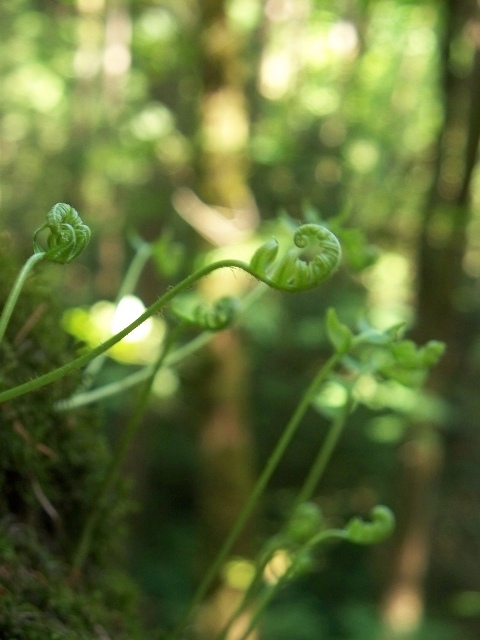Nutrition
When it comes to providing this organism with much needed energy, light becomes a critical element. Licorice Fern, like all fern species, use the process of photosynthesis to generate energy to be used throughout the living plant. Photosynthesis is a two-stage system including both light reactions and the Calvin cycle that ultimately result in the creation of vital sugars for the plant. Ferns are photoautotrophs. This means that they use light as a source to synthesize organic substances such as the product sugars, whereas heterotrophic organisms on the other hand, consume other organisms in order to gain their nutrition (Campbell et al 2008).
Examples of other photoautotrophs:
Examples of heterotrophic organisms:
[Left] Young Licorice Fern Sporophytes,
photo by AlyssssylA
Besides energy, plants such as ferns also need water, carbon dioxide from the air, and other essential minerals from the soil in order for reproduction to occur. The means by which plants attain these requirements are therefore essential to each plants survival, making adaptations of the plant crucial. Click here to find out more on Licorice Fern adaptations.
To return to the home page, click here.
